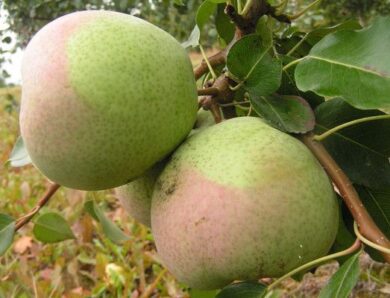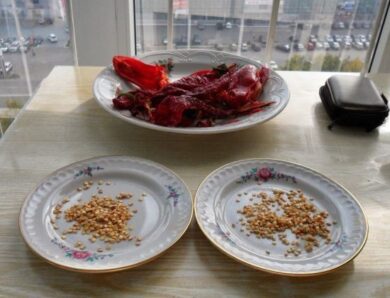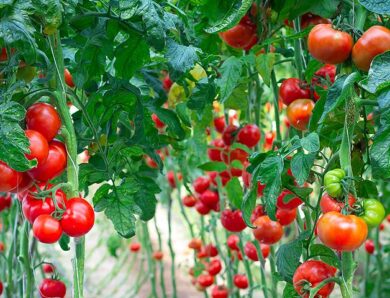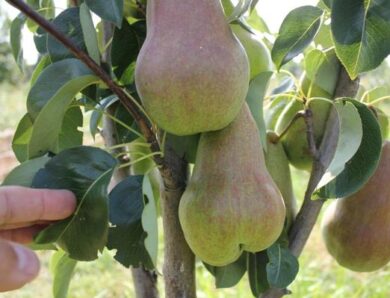Dwarf cherry: description and characteristics of varieties
Low-growing cherry varieties are gaining more and more popularity today. And no wonder: dwarf tree takes up a minimum of space in the garden, does not require much effort in care, and at the same time gives a rich harvest. A description of the main characteristics of the most popular varieties of dwarf cherries can be found in this article.
anthracite
This low-growing cherry grows as a small shrub, reaching a height of not more 2 m. Krone rozlog, the fruits are of average weight 5 g - looks almost black, tastes sweet and sour and very juicy. The species has become very popular among gardeners due to extremely high yields. Care is minimal. The only downside is the high susceptibility to fungal attacks.
short Moscow
Another type of cherry up to two meters tall. The crown is spherical and very thick, which requires some care (in the spring it is necessary to carry out pruning). Harvesting can begin in mid-July, since the species is classified as precocious. Berries are small in size, maximum 4 G, but quite sweet with an unusual taste. The best pollinator will be a glass of pink.
Bead
Bead is considered one of the best varieties of cherries. Trees are short with a spherical crown, slightly pubescent down. The mass of cherries does not exceed 3 G, most often they are deep red. The variety is not intended for consumption in its pure form, grow it for the preservation of cherry juice, jam, cooking compotes. This dwarf cherry is hardy, fruitfulness, resistance to all types of pests.
Rubinovka
Rubinovka came from cherries, therefore considered a hybrid. The peculiarity of the variety - huge fruits weighing up to 8 m In late June, the harvest begins. In a good year the tree can bring up 15 kg of juicy berries. Since the variety is partially self-fertile, it will be better to plant such pollinators nearby, like the cherry Lubskaya. The advantages include resistance to drought and excellent safety during transportation.
Dwarf cherry Standard
Dwarf cherry Standard was bred specifically for growing in the Siberian regions of the country. Usually the tree grows like a bush and reaches a maximum height of one and a half meters. Across 4 years, after the rootstocks were planted, the tree begins to bear fruit. Good yields are still observed 15 years, while berries of medium size (mass 4 G). The collection is made in early August. This variety of cherry is hardy.
Vita
At low altitudes (2 m) has large cherries of bright red color, mass 6 G, flesh with a refreshing taste. Refers to self-fertile varieties, therefore needs pollinators planted nearby. Only in this case you need to consider, that they must be early flowering. It tolerates fungal diseases very well, rarely infected with them.
crimson
Variety, bred by crossing two types of cherries - Vladimirovskaya and Shubinka. The trees reach two meters in height and have a spherical thick crown. Fruits are small - 4 G, but with a very juicy and refreshing flesh. Crop capacity, Unfortunately, small: in a fertile year it will be possible to collect no more 7 kg of berries. The variety is characterized by early ripening and resistance to moniliosis.
Latvian
Ancient variety, bred by Baltic breeders. Currently distributed in the Moscow region. Dwarf tree with a wide spreading crown. It begins to bloom very late, but at the same time bears fruit 25 years. He does not need any pollinators, since the species is attributed to self-fertility. Fertility is very high - from one such tree can be collected to 30 kg of cherries, which are most often used for preserving jams and compotes. The only downside is the average resistance to coccidiosis.
winter pomegranate
Winter pomegranate is a relatively young species of cherry, which does not require special pollinators. A huge plus is that, that the tree will bear fruit even in the most unfavorable growing conditions. He is not afraid of cold winters and hot summers. Unpretentious grenade and pest attacks. This variety is ideal for novice gardeners. With minimal care, the tree gives 10 kg of sweet and sour berries.
Each variety is unique in its own way. In order for the seedling to take root, pay attention to the soil. Ideal for chernozem: plump, breathable, without clay impurities, which retains moisture.
Video "Planting cherries"
You will learn from this video, how to properly plant cherries.




